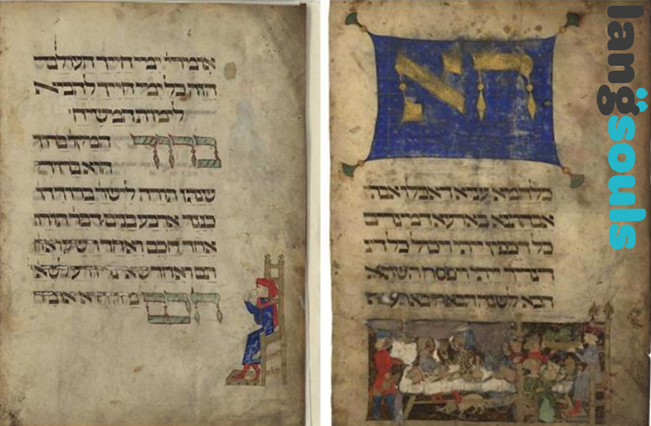This is the 12th installment in a series of posts, which will examine the distinctive aspects of the top 50 commercial languages, meaning the most popular languages being translated today, most typically from English into the target language. No post about the Turkish language would be complete without mentioning Mustafa Kemal Atatürk the visionary leader who gave birth to modern Turkey. His progressive policies and reforms drastically changed the socio-political landscape of the Turkish nation. Since his founding of the Republic of Turkey in 1923, Turkey has embarked on a transformative journey, steering it from the ruins of the Ottoman Empire towards modernity and economic growth. One of Atatürk’s central visions was the Westernization of Turkey, both culturally and economically, making it compatible with European standards and ideologies.
The Turkish language, with its rich history and diverse influences, has played an instrumental role in shaping the cultural and economic fabric of Turkey. Tracing its roots back to Central Asia, it has undergone a series of transformations, especially during the Ottoman era and the subsequent periods, which have significantly impacted its socio-economic environment.
1. Pre-Ottoman Period: The early form of Turkish was spoken by the Turkic tribes of Central Asia. As these tribes migrated to the regions of modern-day Turkey, the language began to evolve and assimilate with other cultures and languages, especially Persian and Arabic due to trade and political ties.
2. Ottoman Turkish: From the 14th to early 20th century, the Ottoman Empire held sway over a vast territory stretching from Europe to Africa and the Middle East. During this period, the Turkish language was significantly influenced by Persian and Arabic due to administrative, religious, and literary requirements. Ottoman Turkish was a complex amalgamation, with a vast lexicon borrowed from these languages and written in a variant of the Arabic script.
3. Language Reform & Republic Era: Post the fall of the Ottoman Empire, the Republic of Turkey was founded by Mustafa Kemal Atatürk in 1923. One of his revolutionary moves was the introduction of the Latin-based Turkish alphabet in 1928 to replace the Arabic script. The goal was to modernize and simplify the language, making it more accessible to the masses. This reform also involved purging many Arabic and Persian loanwords, aiming for a “pure” Turkish.
Economic Implications:
- Trade & Diplomacy: The assimilation of Persian and Arabic terms during the Ottoman era made it easier for the empire to engage in trade and diplomacy with its neighbors. The shared lexicon facilitated better communication and fostered economic growth.
- Education & Literacy: Atatürk’s language reforms in the 1920s significantly impacted literacy rates. The simplified script and grammar made it easier to learn, read, and write, leading to an educated workforce. This played a pivotal role in the early industrialization of Turkey.
- Cultural Exports: Modern Turkish, being more streamlined and standardized, has contributed to Turkey’s booming entertainment industry. Turkish TV series, music, and literature have found audiences in the Middle East, the Balkans, and even Latin America, resulting in considerable economic benefits through cultural exports.
- Tourism & Global Integration: A more accessible language has promoted Turkey as a tourist destination. Furthermore, as Turkey becomes more integrated into the global economy, having a modern, accessible language has been invaluable for international business and diplomacy.
A look at Atatürk’s Economic Reforms:
- Abolition of Feudal System: Atatürk dismantled the archaic feudal structures, allowing for a more egalitarian distribution of land and resources. This encouraged agricultural productivity and liberated vast segments of the population from feudal bonds.
- Introduction of the Latin Script: The switch from the Arabic to the Latin script not only modernized the Turkish language but also made Western education, science, and literature more accessible to the Turks, fostering an environment of innovation.
- Industrialization: Atatürk promoted domestic industries and laid the foundation for the industrialization of Turkey. While the pace was slow initially, it set the trajectory for future growth.
- Secularism: By championing secularism, he reduced the interference of religious institutions in economic and state affairs, providing a stable environment for business and foreign investments.
Integration with Europe:
Turkey’s aspiration to be part of Europe isn’t just a contemporary ambition. Atatürk’s reforms paved the way for Turkey’s candidature and eventual customs union with the European Economic Community (EEC), and later, its ongoing negotiations with the European Union (EU). These ties have:
- Boosted Trade: The customs union with the EEC in 1995 significantly increased Turkey’s exports to European countries.
- Attracted Investments: European companies have increasingly found Turkey an attractive destination for investment, given its strategic location bridging Europe and Asia and a burgeoning domestic market.
- Cultural Exchange: The shared economic interests have also promoted cultural, educational, and technological exchanges, further strengthening Turkey’s European orientation.
Pessimism: Old Geopolitical Norms:
However, despite these impressive strides, Turkey often finds itself clinging to old geopolitical norms and rivalries. Its position as a bridge between the East and the West, both a strength and a challenge, has sometimes led to conflicting allegiances.
- Regional Rivalries: Historical enmities with neighbors, most notably Greece, have occasionally overshadowed its European ambitions. The Cyprus issue remains a major stumbling block in its EU accession process.
- Internal Politics: While Atatürk laid the foundations for a secular and democratic Turkey, internal politics often waver between secularism and Islamism, liberal democracy, and authoritarian tendencies. This inconsistency can make European integration erratic.
- Foreign Policy: Turkey’s involvement in regional affairs, such as the Syrian conflict, and its rapport with Russia, sometimes run counter to European interests and perspectives.
While Atatürk’s vision has undeniably set Turkey on a path of economic growth and European integration, the country’s historical and regional complexities mean that its journey is neither straightforward nor complete. As Turkey grapples with its identity and place in the world, its future trajectory remains a blend of promising potential and inherent challenges.
The evolution of the Turkish language, from its roots in Central Asia to its modern form, is not just a tale of cultural shifts but also one that underscores its profound economic implications. The story of Turkish is a testament to how languages can shape and be shaped by the socio-economic currents of their times.





